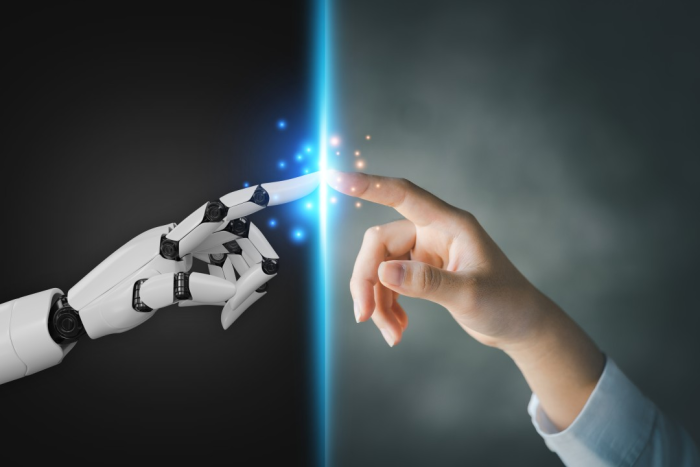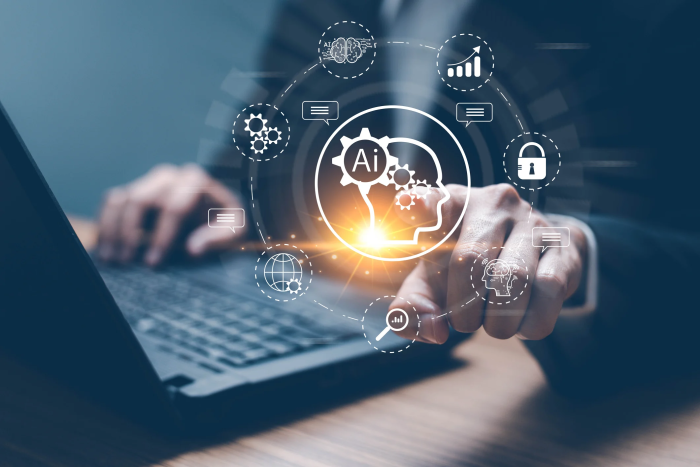
Smart Campaigns, Smarter Sales: A Complete Guide to AI Marketing Automation
October 28, 2024The Must-Have AI Marketing Tools for Small Businesses to Compete Like the Big Players
October 30, 2024Marketing has always been about connection—understanding your audience, meeting their needs, and building trust. In the digital era, however, the way businesses connect with customers is rapidly evolving. The rise of artificial intelligence (AI) has unlocked unprecedented possibilities in marketing. From predictive analytics to chatbots, automated campaigns, and hyper-targeted advertising, AI promises efficiency, precision, and personalization on a massive scale. But in the quest for optimization, a critical question emerges: Is technology alone enough to cultivate meaningful customer relationships?
While AI excels at crunching data and automating tasks, it lacks the essential human traits—empathy, creativity, and emotional intelligence—that foster authentic connections. Marketing isn’t just a numbers game. It’s about creating experiences that resonate, inspire trust, and build loyalty. Customers don’t want to feel like they’re interacting with algorithms; they crave authenticity and emotional engagement. They want to be treated not as data points but as individuals whose needs are genuinely understood.
On the other hand, relying solely on human intuition without leveraging AI’s capabilities would be inefficient. AI offers critical insights by analyzing vast datasets, predicting trends, and personalizing communications at scale—things that would be impossible to achieve manually. Thus, the future of marketing doesn’t lie in choosing between human touch and AI but in finding the perfect blend of both.
This balancing act is becoming increasingly important as customer expectations evolve. A hybrid approach—combining AI’s power with human creativity—ensures that businesses not only operate efficiently but also stay connected with their audiences on a personal level. In this blog, we explore how businesses can strike the perfect balance between human intelligence and AI-driven solutions to build stronger customer relationships, foster trust, and deliver exceptional marketing experiences. From personalized storytelling to empathetic customer service, this is a deep dive into how brands can harmonize technology and humanity to thrive in a competitive landscape.
Let’s explore how this dynamic synergy between AI and human touch is shaping the future of marketing—and how your business can get it right.

Why AI Alone Isn’t Enough in Marketing
AI has transformed marketing by optimizing tasks like email personalization, customer segmentation, and ad targeting. It reduces manual work and ensures faster, data-backed decisions. However, AI cannot replicate emotional intelligence—the very thing that makes human-to-human communication meaningful.
Here are a few challenges with over-relying on AI in marketing:
- Lack of Emotional Insight: AI can analyze past behavior and predict trends, but it struggles to understand nuanced human emotions like empathy or trust.
- Creativity Gaps: While AI can assist in generating content, original and emotionally resonant storytelling still requires human imagination.
- Risk of Alienation: Customers may feel disconnected if they receive overly robotic or automated messages without a personal touch.
- Context Blindness: AI may not always interpret context correctly. For example, sending a cheerful email during a sensitive time could backfire.
How Human Touch Complements AI in Marketing
The human element is essential in crafting experiences that connect emotionally and ethically with customers. Here are some ways in which human creativity and empathy enhance AI’s capabilities:
1. Personalized Storytelling
AI excels at collecting and analyzing data, identifying trends, and segmenting customers. However, humans tell stories—connecting brand values to the emotions of their audience. For example, while AI can suggest the best time to send an email campaign, it takes a marketer’s creativity to design compelling copy that resonates with the reader on a personal level.
A real-world example is Coca-Cola, which uses AI to tailor customer recommendations but relies on creative teams to develop emotional campaigns like “Share a Coke.”
2. Customer Support with Empathy
AI-powered chatbots have revolutionized customer service by providing instant responses and 24/7 availability. However, chatbots are only effective for straightforward inquiries. When dealing with complaints or sensitive customer issues, human agents are essential to provide understanding and empathy that builds trust and loyalty.
Many companies use a hybrid model—chatbots handle simple requests, while more complex concerns are escalated to human agents, creating a seamless and thoughtful customer support experience.
3. Trust Building in Marketing Communications
AI can automate email marketing and advertising campaigns, but building trust requires a human connection. Personalized marketing efforts—like sending a handwritten thank-you note after a major purchase or showing appreciation during customer milestones—foster relationships that go beyond transactional value.
Brands like Zappos are known for incorporating the human touch into automated processes. Their customer service agents are empowered to go above and beyond to surprise customers, building loyalty in ways that AI cannot.
4. Making Ethical Decisions
AI makes decisions based on algorithms and data, but it cannot navigate ethical dilemmas. For instance, a purely data-driven ad campaign may target vulnerable customers (e.g., promoting luxury products to individuals in financial distress) without considering the ethical implications. Marketers need to oversee AI campaigns to ensure that the company’s values align with the message being sent.
Human oversight ensures that AI technologies are used responsibly, maintaining brand integrity and public trust.

Best Practices for Balancing Human and AI Elements in Marketing
Achieving the right balance between AI-driven efficiency and human creativity requires a strategic approach. Here are some best practices:
1. Automate Repetitive Tasks, but Humanize Key Interactions
Use AI to handle tasks such as scheduling posts, analyzing performance data, or sending automated reminders. Reserve human interaction for moments that require emotional connection—like customer feedback calls or resolving complaints.
2. Involve Humans in AI Development
Marketers must work closely with data scientists and AI developers to ensure that algorithms align with customer needs and reflect brand values. Involving people in the design of AI systems ensures a more customer-friendly outcome.
3. Use AI for Insights, but Keep Creative Freedom
AI can provide valuable insights into audience behavior and suggest optimal marketing strategies, but creative freedom should remain with the marketing team. Data can guide campaigns, but the final message should reflect a brand’s unique voice and tone.
4. Monitor AI Outputs for Bias and Errors
AI is not infallible—it can inherit biases or produce misleading outputs. Regular monitoring by human marketers ensures campaigns remain ethical and accurate. For example, automated translation tools should be checked for cultural sensitivity by human linguists.
5. Maintain Transparency with Customers
Be transparent with customers about the use of AI. People appreciate honesty—letting them know when they’re interacting with a chatbot versus a real person helps manage expectations and build trust.
Real-Life Example: Sephora’s AI-Human Balance
Sephora, a beauty retailer, has perfected the art of balancing AI and human interaction. Its Virtual Artist tool uses AI to recommend products based on customers’ facial features and preferences. However, Sephora also offers in-store consultations with beauty experts, ensuring customers get personalized advice from real people.
This hybrid model allows Sephora to leverage AI for efficiency while maintaining a personal touch that enhances the overall shopping experience.
Conclusion: Finding the Sweet Spot Between AI and Human Touch
AI is undeniably changing the landscape of marketing, bringing speed, precision, and scalability to campaigns. However, successful marketing is not just about data—it’s about people. The emotional connection that customers seek cannot be fully automated, and brands that rely solely on AI risk becoming cold and disconnected.
By combining the strengths of AI and human creativity, businesses can create personalized, meaningful experiences that resonate with their audience. The future of marketing lies in this delicate balance—where data meets empathy, and algorithms work alongside intuition to deliver outstanding results.


